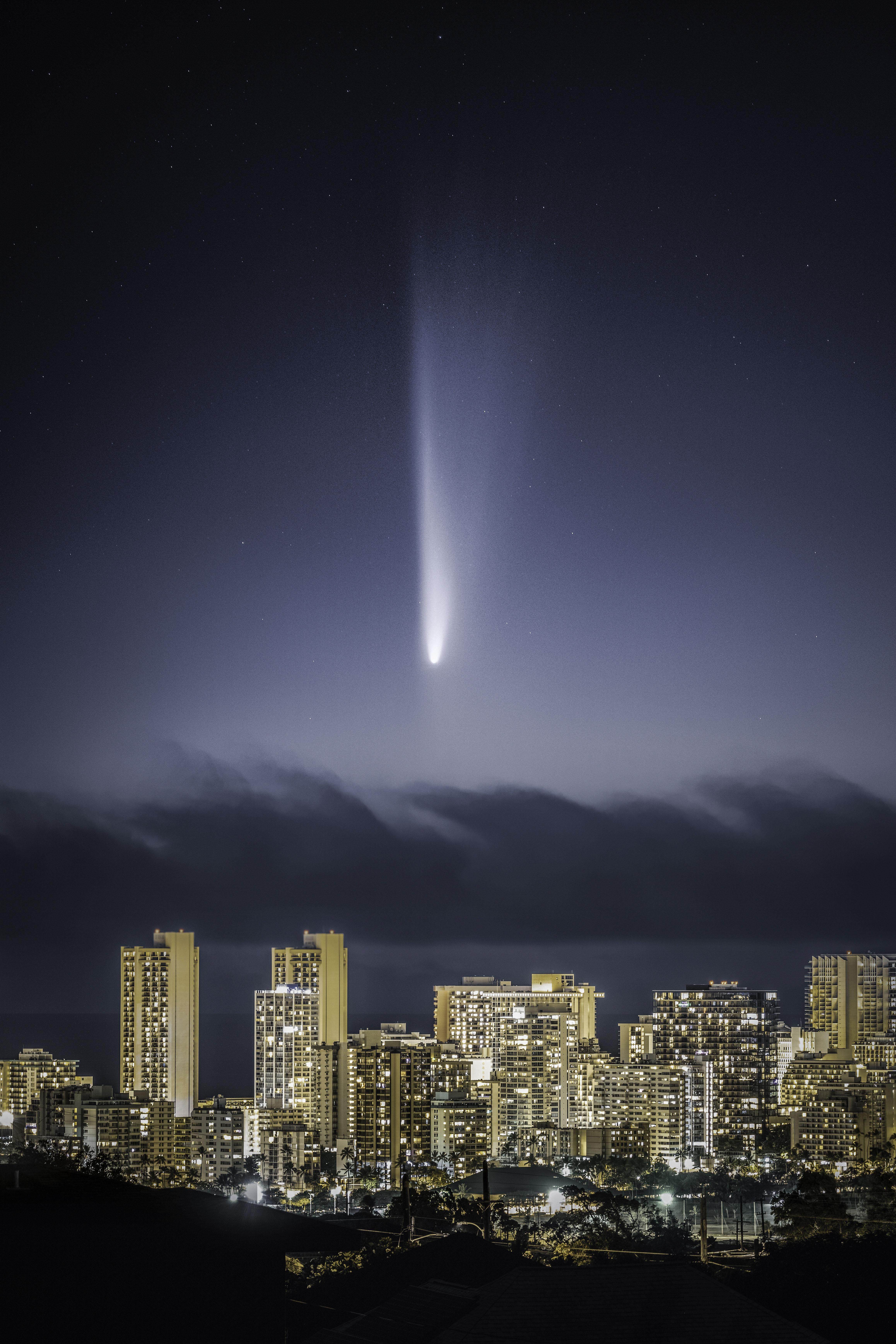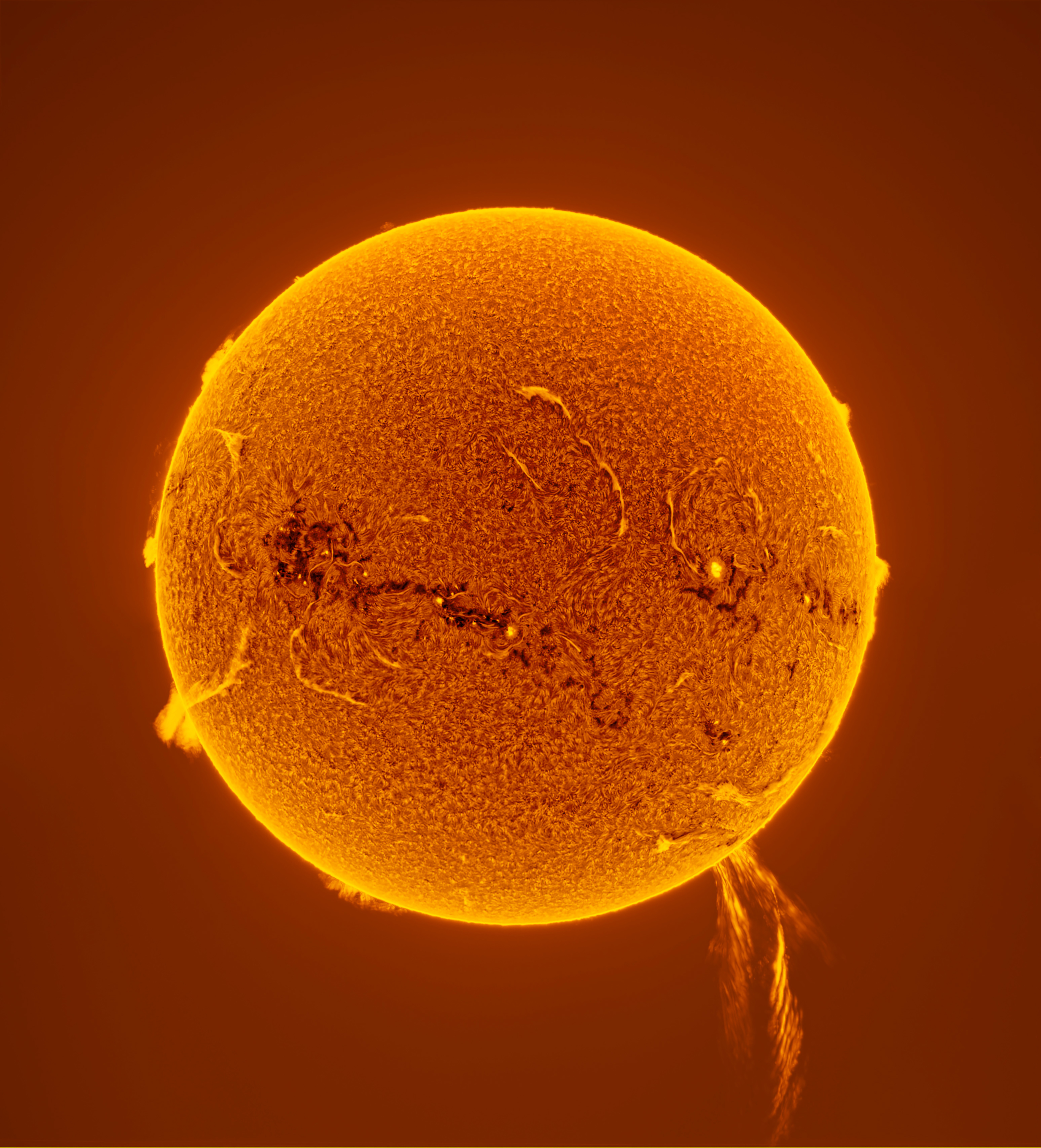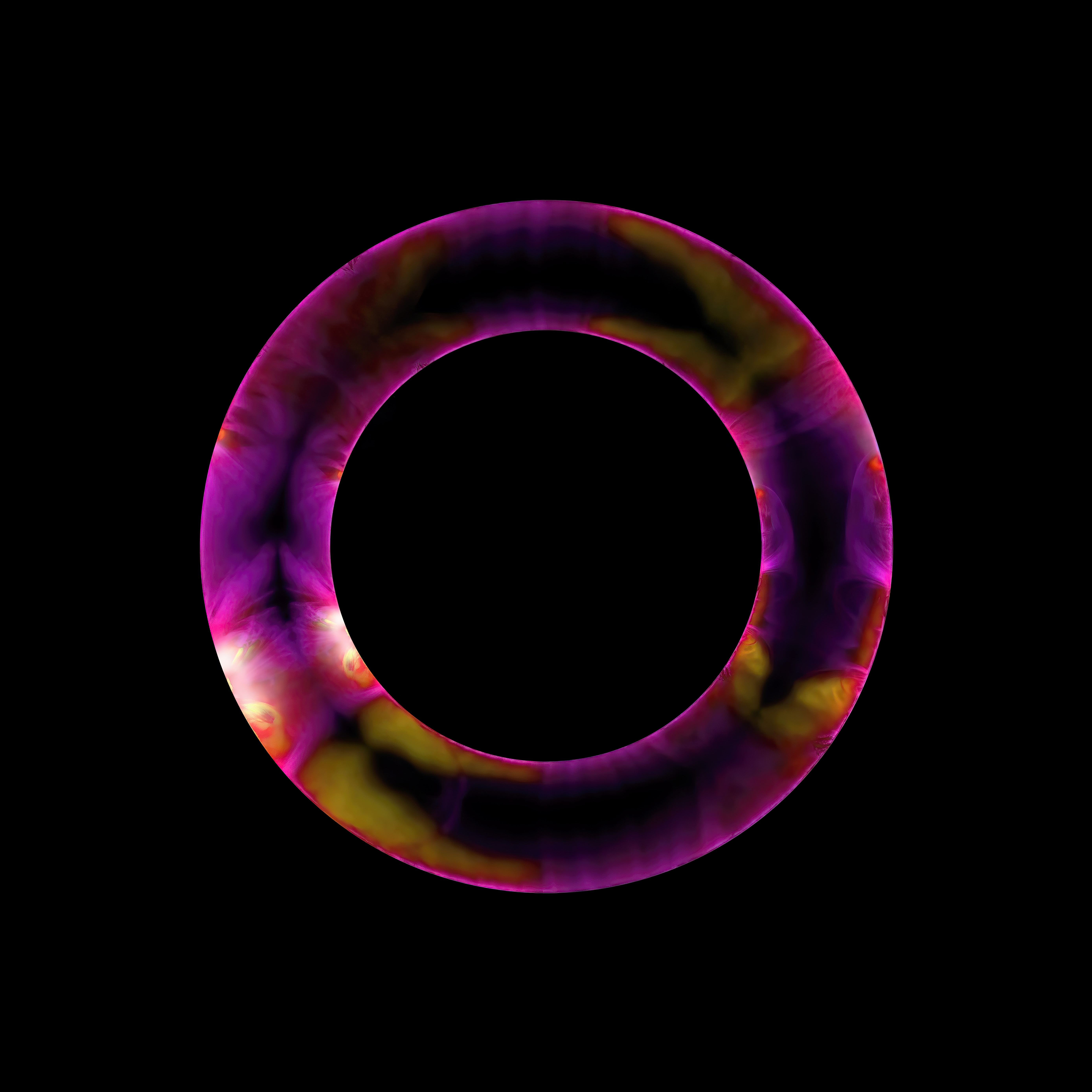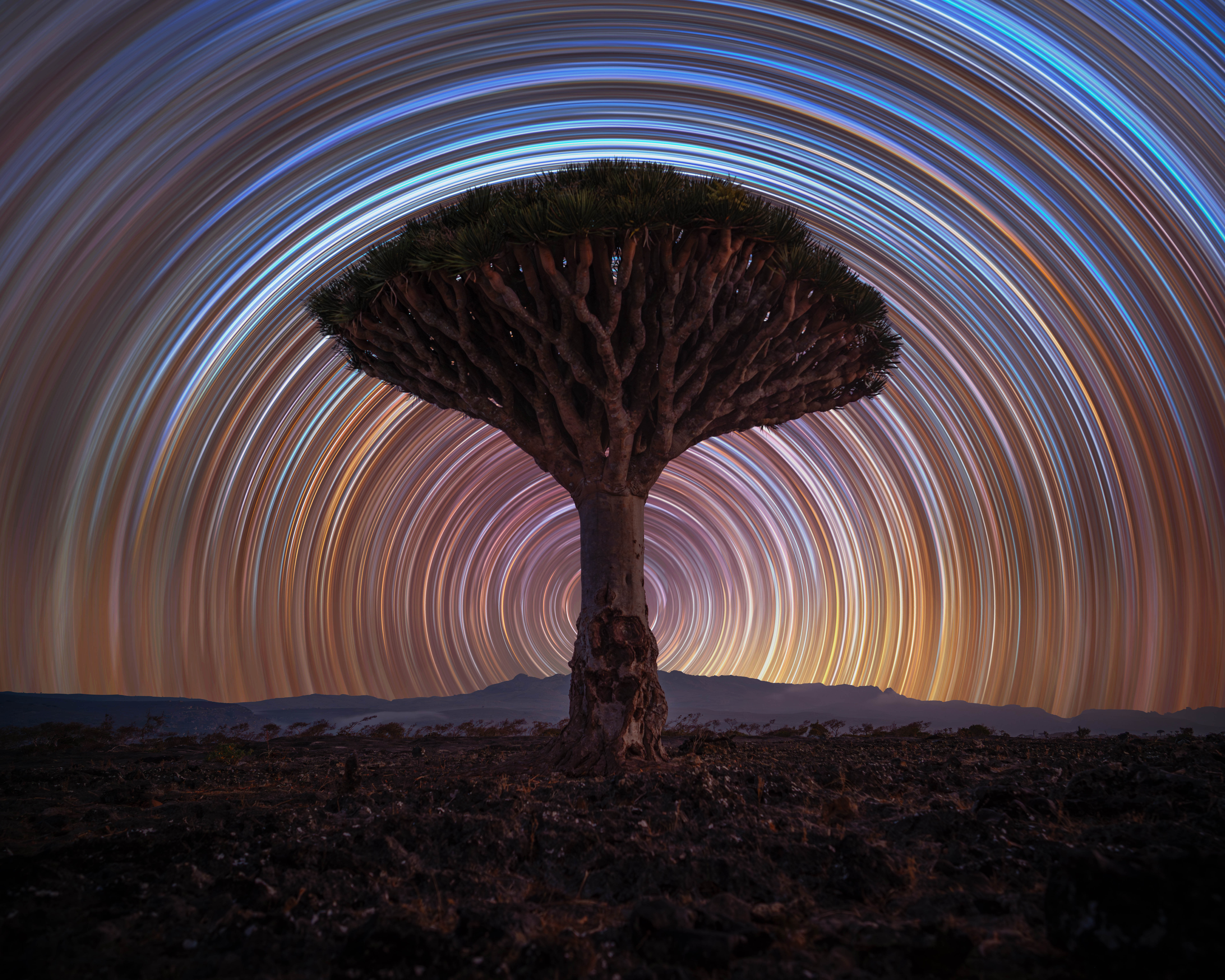It must be hard being a judge for ZWO Astronomy Photographer of the Year. The competition, organized by the Royal Observatory Greenwich, is in its 17th year, and it continues to deliver truly breathtaking cosmic art no matter the subject: electrifying aurorae, incredible juxtapositions of buildings or natural objects with the dark sky, and so many different views of the celestial events that took place over the last 12 months.

A Rainbow Mosaic of the Rosette and the Christmas Tree Nebulae.
Image credit: © Shaoyu Zhang
There were two in particular that couldn’t not feature in this year’s shortlist – just a handful of the over 5,500 entries that were submitted from 69 countries around the world. One was the total solar eclipse, crossing from Mexico to Canada, a spectacle experienced by over 200 million people, and it definitely had several astrophotographers there in person.

Comet Over Waikiki.
Image credit: © Ran Shen
There was also Comet C/2023 A3 (Tsuchinshan-ATLAS), which became visible to the naked eye during late summer and early autumn. It flew close to the Sun, ending up being bright and active – exactly what astrophotographers would want from a comet.

500,000-km Solar Prominence Eruption.
Image credit: © PengFei Chou
If this were not enough, the Sun has been going through the solar maximum, the peak of activity during its 11-year-long cycle. It is captured beautifully in one of the shortlisted photos, where a solar prominence stretches for 500,000 kilometers (310,000 miles). Now that drives home just how powerful the Sun can be.

Total Solar Eclipse.
Image credit: © Louis Egan
For each of the nine main categories and two special prizes, there are three awardees: a winner, a runner-up, and a highly commended prize. And there will be an overall winner who will take home a £10,000 prize (around $13,500). This year, The Annie Maunder Prize for Image Innovation has become The Annie Maunder Open Category. The entrants can be more artistic and creative when it comes to showcasing what is possible with astronomy images.

Neon Sun.
Image credit: © Peter Ward

Dragon Tree Trails.
Image credit: © Benjamin Barakat
The winners of the competition will be announced on Thursday, September 11, and the winning photographs will be available to see in an exhibition in London as well as in a special book.
Source Link: Celestial Fish And Chips And A Solar Cataclysm Shortlisted For Astronomy Photographer Of The Year